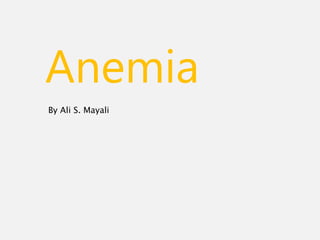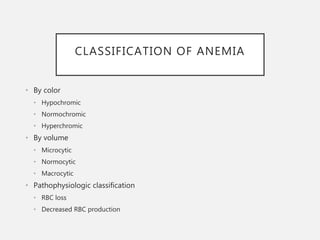This document defines anemia and provides classifications of anemia. It begins by defining anemia as a condition where the number of red blood cells or amount of hemoglobin is lower than normal, causing inadequate oxygen delivery. It then lists normal hemoglobin and red blood cell reference values. Anemia is classified based on cell size (microcytic, normocytic, macrocytic), color (hypochromic, normochromic, hyperchromic), and pathophysiology (red blood cell loss, decreased production). Common causes of anemia are discussed including iron deficiency, thalassemia, sickle cell disease, and blood loss. Diagnostic findings and treatments for various specific anemias are also summarized.












































